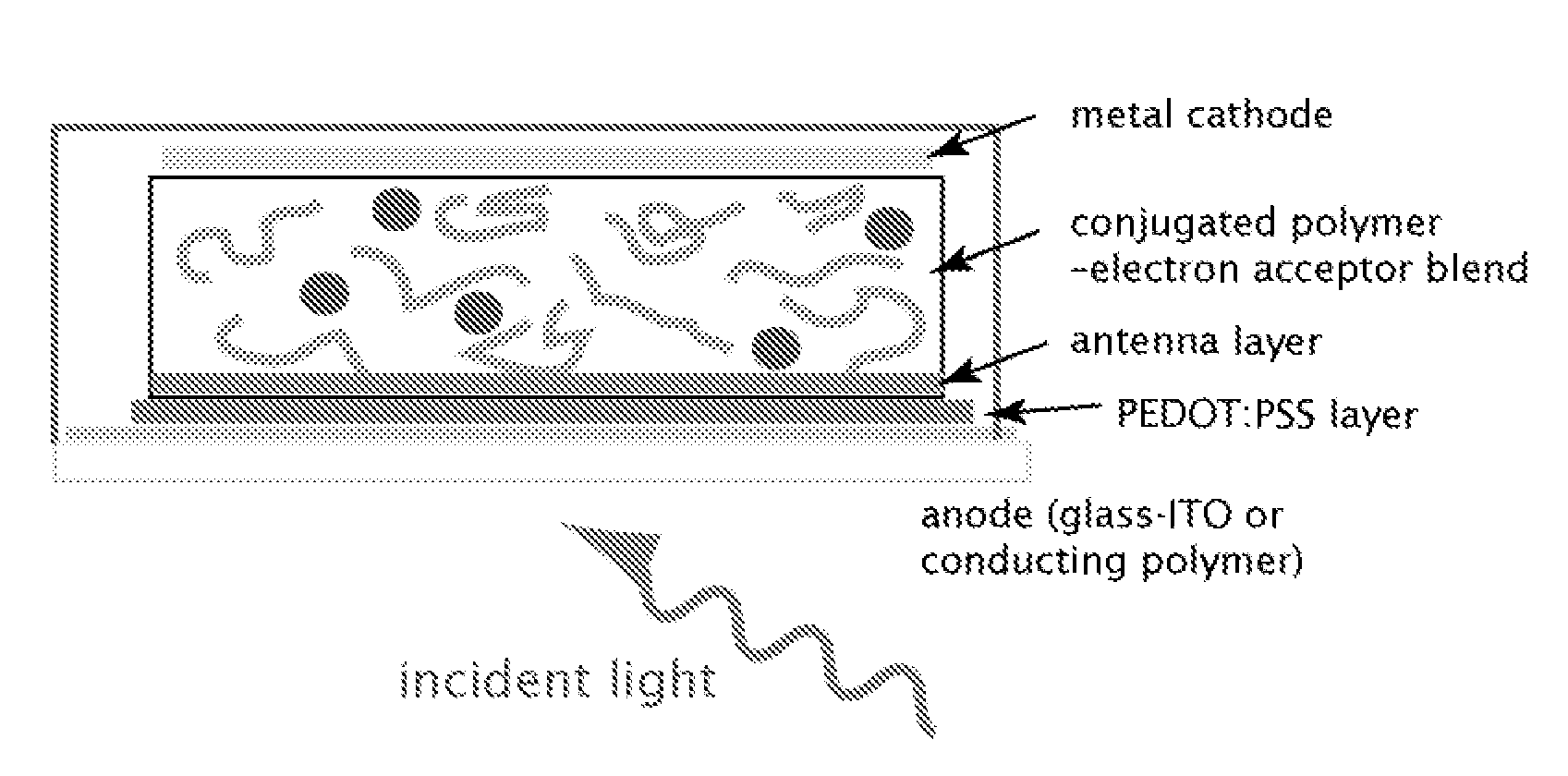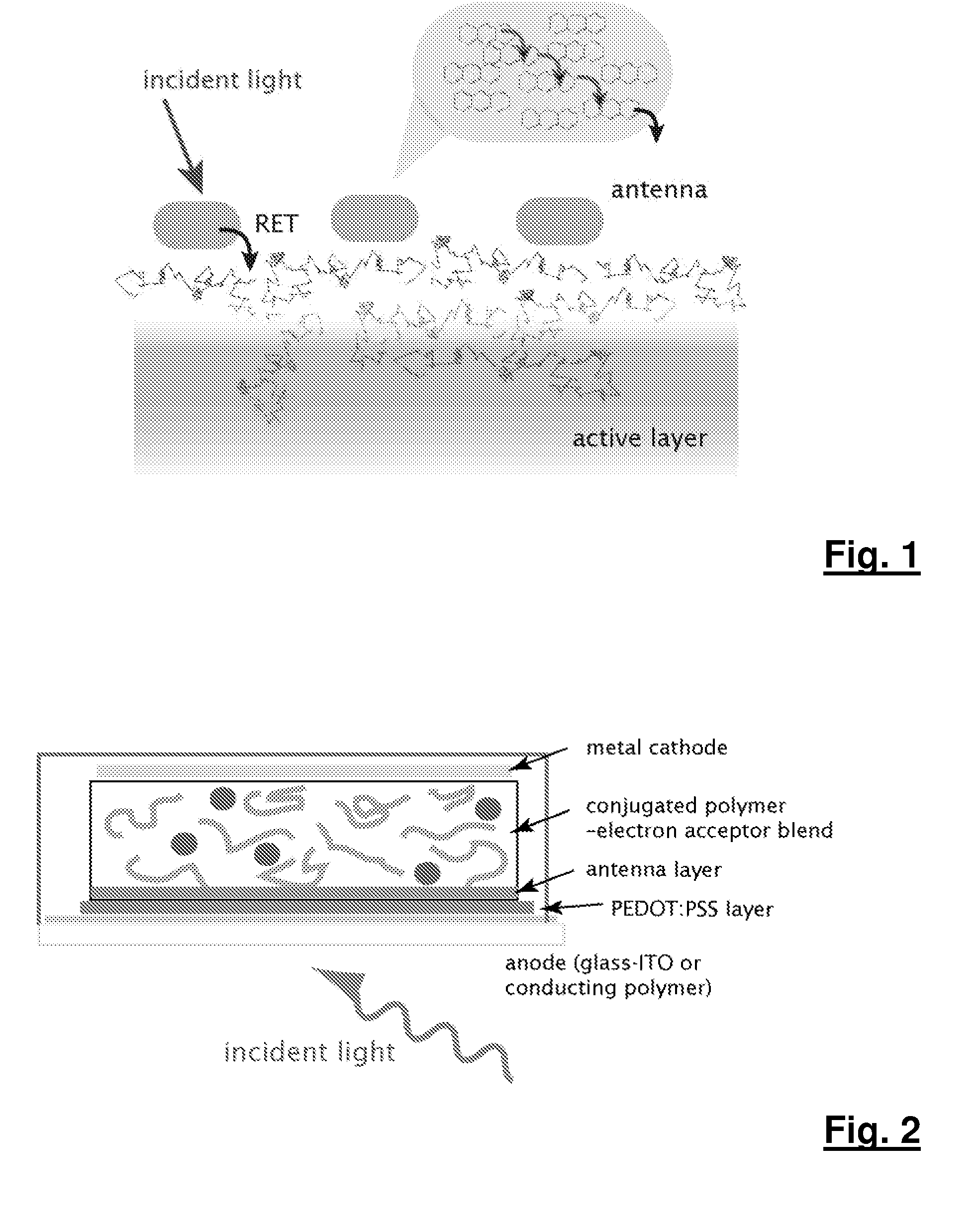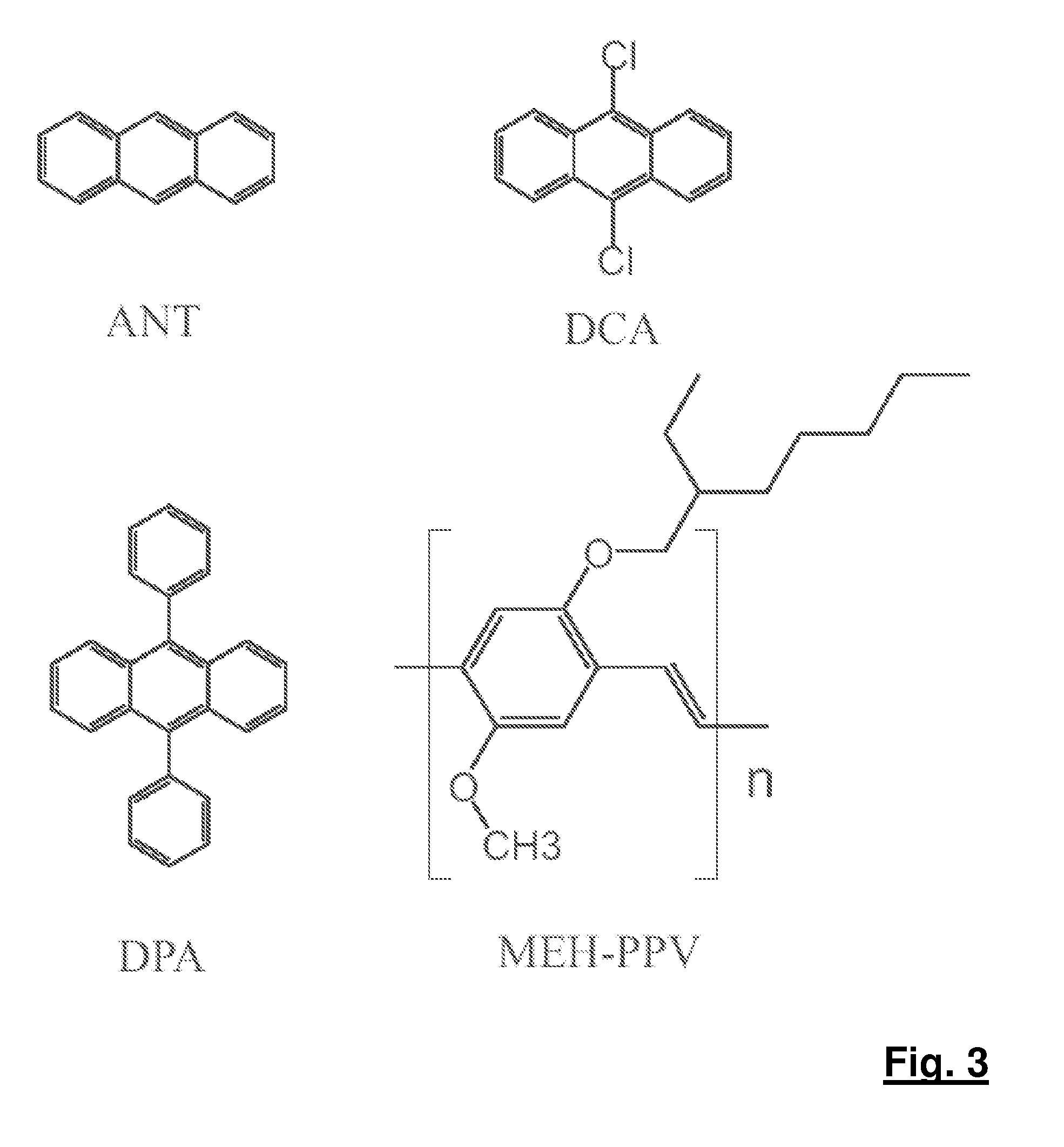Light-harvesting antennae for organic solar cells
a solar cell and organic technology, applied in the field of photovoltaic cells, can solve the problems of poor fundamental understanding of the physics that underlies the various processes of low conversion efficiency, and inability to replicate the complex pigment/protein interactions of photosynthetic proteins used in man-made solar light harvesting devices, etc., to improve the efficiency of incident spectra, improve the efficiency of solar cells, and improve the effect of energy conversion efficiency
- Summary
- Abstract
- Description
- Claims
- Application Information
AI Technical Summary
Benefits of technology
Problems solved by technology
Method used
Image
Examples
example 1
[0053] The light-harvesting efficiency of the present invention was demonstrated using systems consisting only of a clear quartz substrate, a bottom layer of MEH-PPV polymer, and a top antenna layer. These layers are prepared by sequentially spin coating MEH-PPV from chlorobenzene (˜250 nm) followed by spin-coating the antenna layer from acetonitrile solvent (˜150 nm). The film thicknesses and morphologies were determined by an ellipsometer and the surfaces were found to be somewhat rough, especially that of the antenna layer, where the anthracene and derivatives do not form a thin film, but rather recrystallize on the MEH-PPV. FIG. 4 illustrates the setup, with the organics spun on top of each other onto the quartz substrate. The order of the layers from bottom to top is quartz, ITO, PEDOT.PSS (a commonly used hole transport layer), antenna, blend of MEHPPV / C60 and aluminium electrode. The external circuit runs from the ITO anode to the aluminium cathode.
[0054] The spectral charac...
example 2
[0061] Organic solar cell devices were fabricated and tested as follows. All inch-squared ITO-coated glass cells were thoroughly cleaned by successive 5 minute sonications in detergent, deionized water, methanol, acetone, and isopropanol and were wiped and dried. Masks were applied to the cells using electrical tape about 2.5 mm into the entire perimeter of the cell. PEDOT.PSS was spin-coated on top of the ITO layer at a rate of 3000 rpm for 40 seconds, then 4000 rpm for the last 15 seconds, and left to cure at 150° C. in vacuo for 90 minutes. A second mask was then applied another 2.5 mm into the cell. A 0.6 wt. % 1:1 MEH-PPV(MW=900,000):C60 derivative solution in 1,2,4-trichlorobenzene was prepared in an N2 environment, after the solvent was purged with N2 prior to addition to the solids. A saturated anthracene solution using methanol was also made, the methanol also purged with N2 before addition to anthracene in an inert environment. Both solutions were kept in an N2 environment...
PUM
| Property | Measurement | Unit |
|---|---|---|
| Thickness | aaaaa | aaaaa |
| Thickness | aaaaa | aaaaa |
| Thickness | aaaaa | aaaaa |
Abstract
Description
Claims
Application Information
 Login to View More
Login to View More - R&D
- Intellectual Property
- Life Sciences
- Materials
- Tech Scout
- Unparalleled Data Quality
- Higher Quality Content
- 60% Fewer Hallucinations
Browse by: Latest US Patents, China's latest patents, Technical Efficacy Thesaurus, Application Domain, Technology Topic, Popular Technical Reports.
© 2025 PatSnap. All rights reserved.Legal|Privacy policy|Modern Slavery Act Transparency Statement|Sitemap|About US| Contact US: help@patsnap.com



